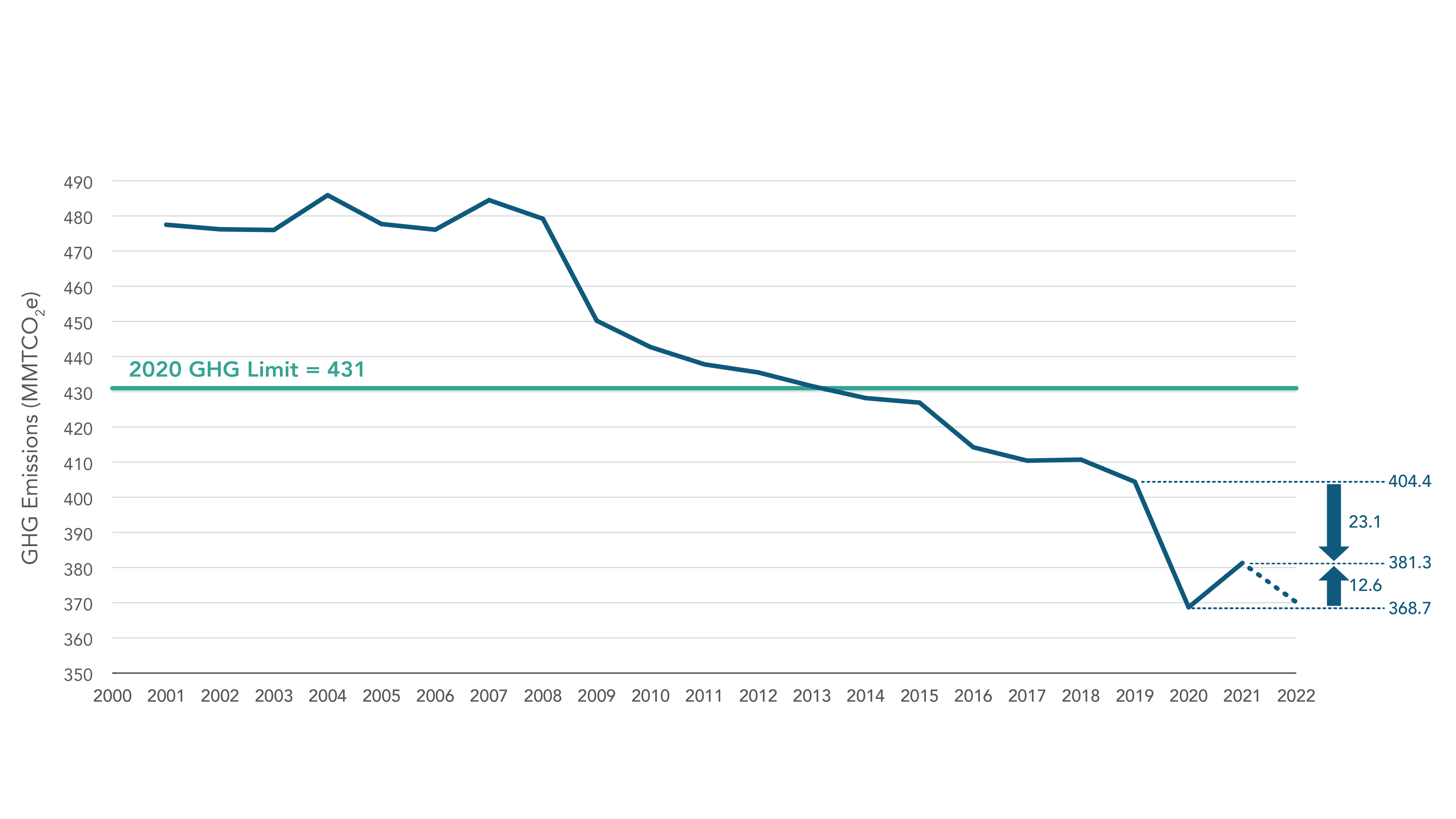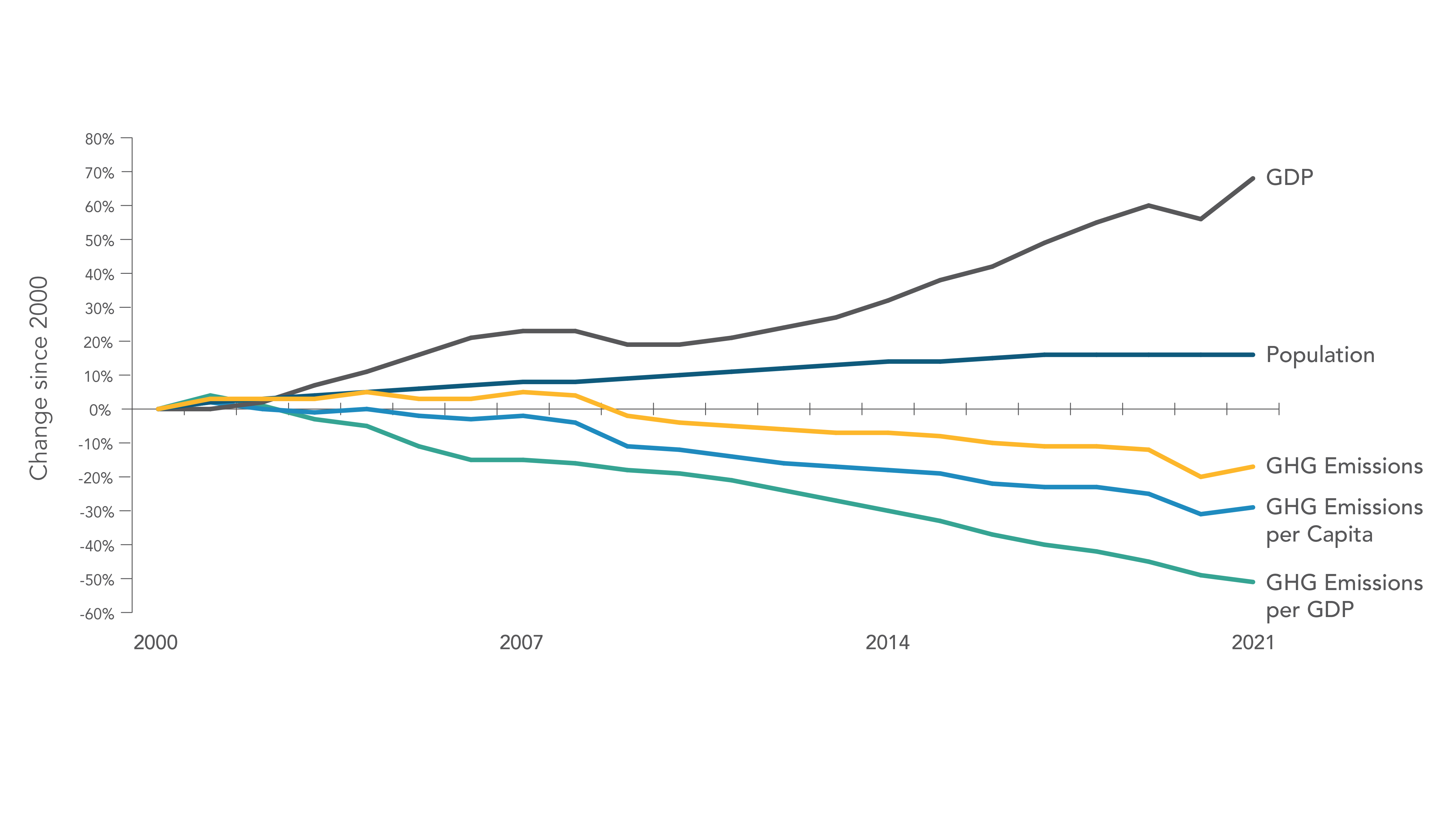SACRAMENTO – Today [Dec. 14, 2023], the California Air Resources Board (CARB) released the updated Greenhouse Gas (GHG) Inventory data showing that emissions significantly decreased in 2020 when the global pandemic slowed economic activity, increased in 2021 as the economy recovered, and is projected to decrease again in 2022.
The data show that emissions in California have steadily declined over the years, despite the dramatic swings due to the pandemic. In its release of the 2020 GHG inventory data, CARB noted that the drastic reduction in emissions that year was an anomaly spurred by the pandemic, and subsequent data needed to be analyzed in that context.
An early look at the 2022 reported and third-party verified data for the state’s largest emitters show that the downward trend continued. The 2022 data is not yet final and will not be released until late 2024 once federal data sources are updated and incorporated.

Compared to 2020, 2021 emissions rose by almost 13 million metric tons, which represents a 3% increase, even as California saw an 8% increase in economic activity following the height of the COVID-19 pandemic. Compared to pre-pandemic 2019 figures, emissions have decreased by 23 million metric tons, which is the equivalent of removing 5 million passenger cars from California’s roads.

“The inventory data demonstrate that California’s commitment to an economy-wide approach toward emissions reductions is putting us on a path toward cleaner air and a healthier future,” said CARB Executive Officer Dr. Steven Cliff. “The results also show that we need to continue doubling down on the work that will make a carbon-neutral California a reality.”
2021 emissions decreased from 2020 data in the following sectors:
- Agricultural emissions went down, driven by the use of digesters, which remove methane from the air and turn it into an alternative fuel source.
- For the first time in 20 years, refrigerant emissions leveled out due to CARB regulations across various uses.
2021 emissions increased from 2020 data in the following sectors:
- Transportation emissions grew 10 million metric tons, which reflects the return to daily activities and work following the rescinding of pandemic stay-at-home orders.
- Energy sector emissions increased by 2.8 million metric tons, likely driven by an increase in demand and lower hydroelectric power.
- Emissions from the industrial sector increased by 0.6 million metric tons, specifically from refineries and petroleum extraction, which may also be tied to demand from the increased economic activity.
California’s annual statewide GHG Inventory relies on data from the Mandatory Reporting Regulation, which requires key sectors to submit emissions data, as well federal and state sources.
Source: “Updated emissions data show overall downward trend continuing,” Dec. 14, 2023 CalEPA Air Resources Board press release.
Image credits: All images (corresponding, connected featured home and this page) CalEPA Air Resources Board
